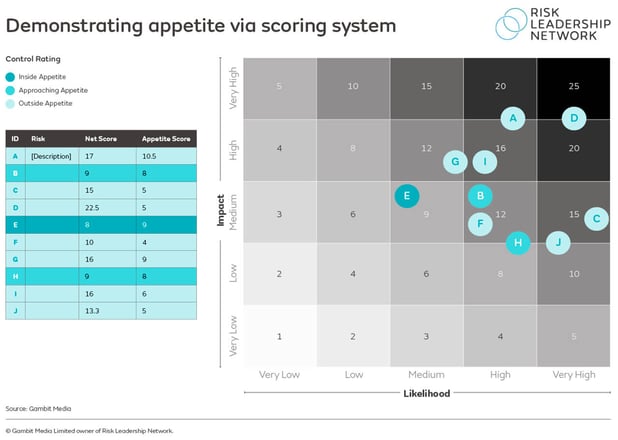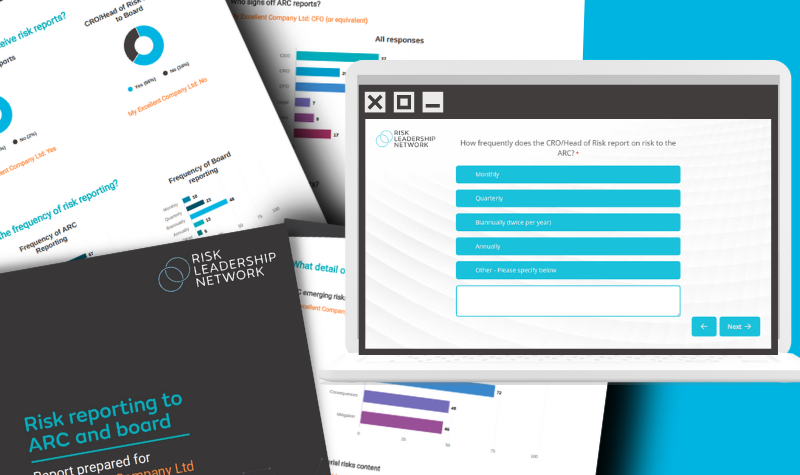Key considerations for enhanced risk reporting
Your organisation’s risk reporting should support the board of directors to meet business objectives and manage risks efficiently and effectively. But just as organisations change, so do the risks they face.
While your risk reporting processes should be able to account for such developments, welcoming new board members can provide a useful opportunity for re-examination.
Members of Risk Leadership Network have been discussing how they are going about enhancing their existing risk reporting structure and output - below, we have collated some of the key insights hared during these conversations.
1) Consider your customer
Before making any changes to your current reporting systems and processes, try to gather up-to-date information about the concerns of board members – both individually and as a group. Are there any preferences as to how and when this information is presented?
Disseminating a reporting schedule can help address concerns and promote engagement from board members so they can prepare for upcoming reports and be ahead of the game.
Remember that the board is a group of individuals with different interests and concerns. The group is also likely to change over time. So, while it is important to maintain consistency of output, you also need to build some room for manoeuvre into your reports to capture any changes of focus into the future.
2) Keep it consistent, clear and concise
Many risk teams find that keeping style and format consistent for risk reports helps board members read and understand the information more efficiently.
There are also tools that you can use to help directors quickly understand the main points of the risk report. For example, many firms use visualisations to illustrate risk levels in an accessible way that doesn't overwhelm executives with an abundance of narrative.

3) Delving deeper
Be ready to provide more detail once the initial report has been presented to the board. This kind of request is a good sign of your board’s risk maturity and level of engagement with risk reporting.
While requests for more detail can be as simple as board members asking on-the-spot questions, some directors could request a deeper dive.
Aside from providing more detail on a specific risk issue, a deep dive can also help directors to understand how different risks intersect with one another. This provides a more holistic view of the organisation’s level of risk exposure.

Risk Leadership Network works with its member organisations to improve the effectiveness of their risk management through peer-led collaboration. If you're an in-house risk manager who would benefit from collaborating with a global network of risk leaders, we'd love to discuss membership with you. But here are 5 ways you can see more of what we do before committing:
Participate in a risk reporting virtual meeting
We facilitate regular collaborative meetings between risk leaders on various topics within risk reporting. Although our small meetings are exclusively for members, we sometimes invite non-members to enhance the conversation and to give you a taster of what we do. Tell us what your risk reporting priorities are and we'll invite you to the next relevant meeting (following qualification). Request to participate here.
Take part in our interactive risk reporting self assessment
Contribute to our Risk reporting to the ARC and board benchmark and get a bespoke report that benchmarks your risk reporting frequency, structure and contents against 120+ global risk leaders. Get started here.
Save time on your external reporting
Request a demo of the Risk Reporting Comparison Tool and the TCFD Reporting Comparison Tool to analyse the reporting trends in company annual reports.
Read our risk reporting guide
From examples contributed by our membership, we've aggregated the core components that make up effective risk reporting in our feature-length guide, How to create standout risk reports that demonstrate the real value of Risk.
Visualisation examples
Take a look at some of the ways risk leaders in our network are expanding the visualisations in their risk reports beyond heatmaps and download the template for each example.
Share this
Related posts you may be interested in

How to create standout risk reports that demonstrate the real value of Risk

Reporting risks in smarter ways - our Risk Reporting Comparison Tool
